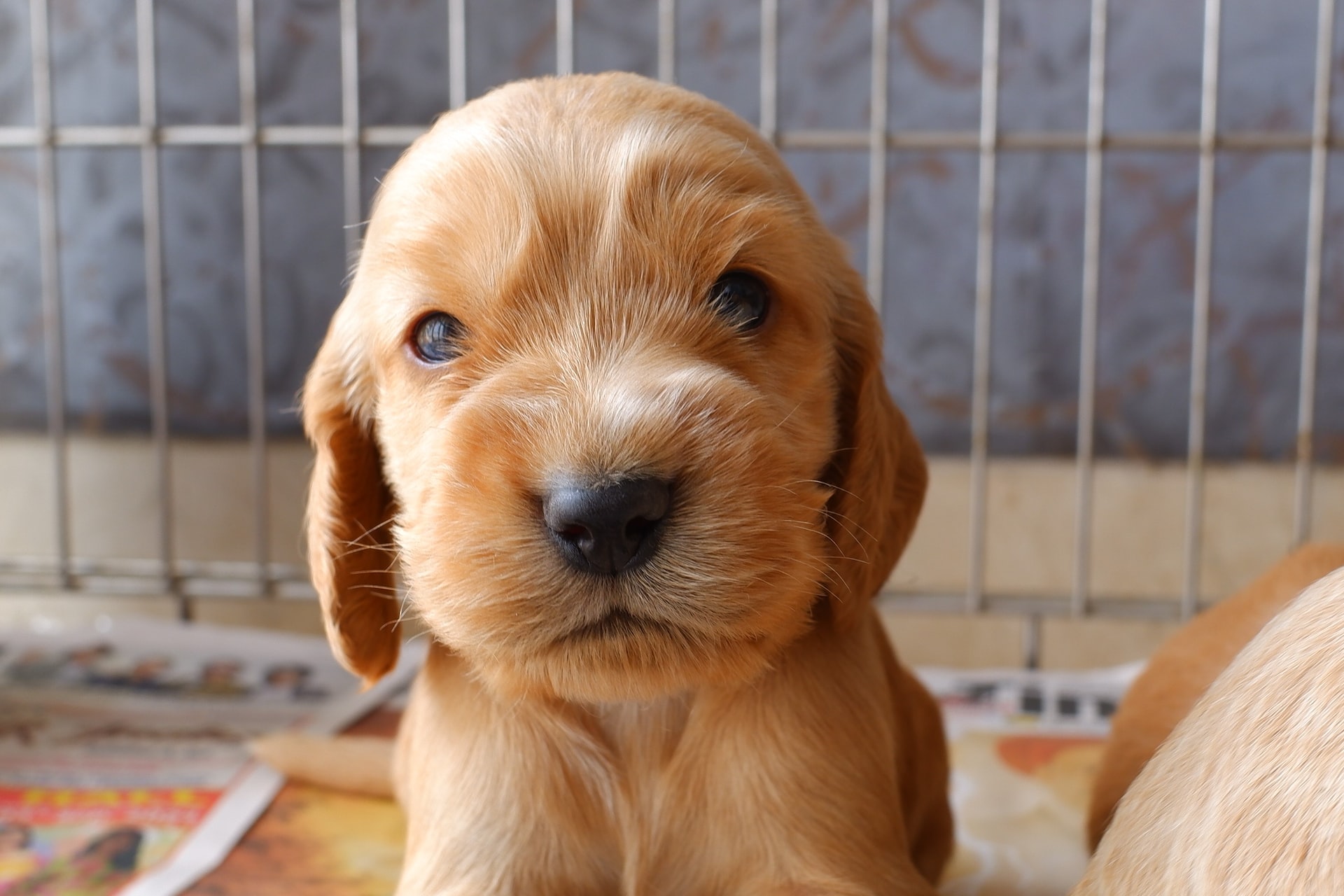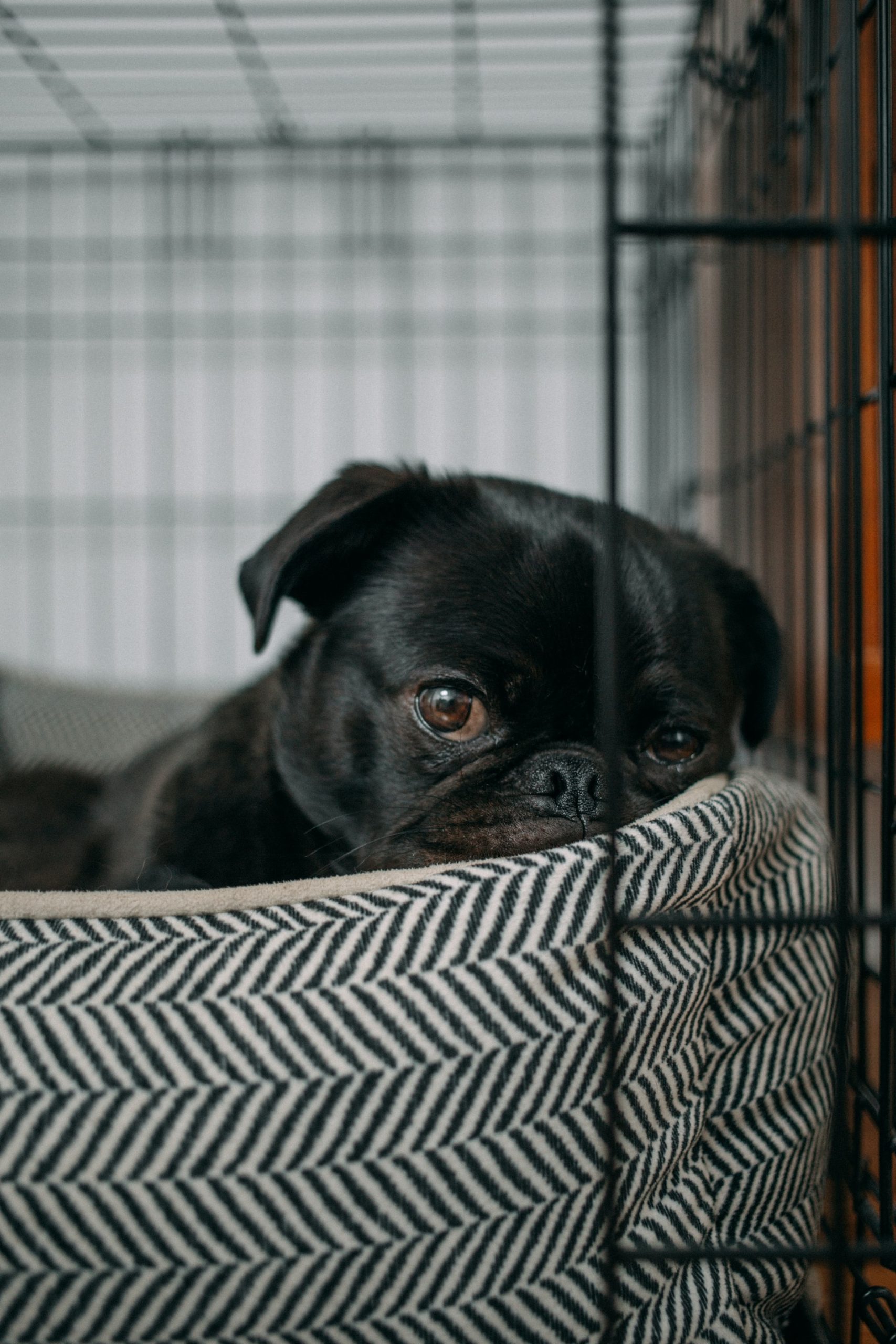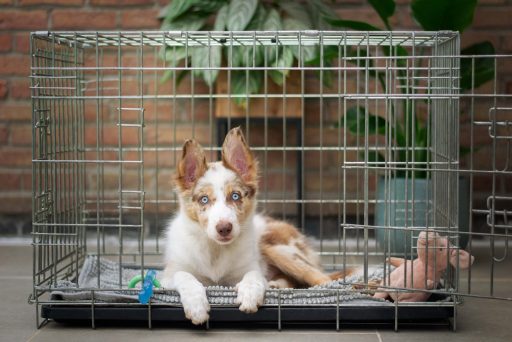Should I crate train my dog? Crate training is a great way to potty train your pup and helps them learn to be independent. It can also help with behavioral issues such as chewing and barking. Training your best friend to use a crate can seem daunting, but it doesn’t have to be. With patience and consistency, you can easily crate train a puppy. This comprehensive guide will demonstrate how to train your pup to use a crate, the type of crate to use and how to introduce your dog to the crate gradually through the training steps.
What is Crate Training?
Crate training is a great way to house train your furry friend. It also helps keep your pup safe during the day and gives them peace of mind at night. A crate will become your dog’s “den” – a safe place where they can retreat to when they want to rest or sleep.
Training your pup to use their crate is also one of the best ways to prevent them from chewing, digging, or escaping. A den can be a safe place for your dog to sleep, hide, and play. However, it doesn’t mean that you can leave them in their crate all day long. Most dogs need to exercise daily and should be taken out of their crates every few hours.
The Benefits of Crate Training

- Your dog will be able to relax in their own space inside the crate.
- You’ll be able to keep them safe while traveling.
- Your pup will become familiar with the crate as a place where they can go when they needs some quiet time or wants to settle down.
Things to Be Aware of During the Crate Training Process
When crating your dog, there are a few cautions to keep in mind.
- The processing of crate training should take place as soon as possible. Never use the crate as punishment or hit your dog and frighten them with the crate. It will only make your pup fear the crate and make it more challenging to train.
- Also, never leave your puppy in the crate for more than three hours. They need to be let out of the crate for frequent breaks to go outside and use the bathroom as well as get a drink, exercise and socialization.
- The crate is not for play time. If your pup is getting into the crate to play, then they will expect to play once they get out of the crate.
- Finally, make sure the crate is comfortable and inviting. Add a cozy blanket and a few favorite toys to make the crate a place your dog looks forward to going into. Though your pup should not spend most of their time inside the dog’s crate. A crate is not a prison, rather a tool to help them self soothe and relax.
With these cautions in mind, training to use a crate can be an excellent way to help them learn how to behave while they are around the crate.
Selecting a Crate Right for Your Puppy
The most common type of crate is made from plastic or wire and is portable, but other options are available, such as soft-sided dog carriers or kennels. Crates come in various sizes and are readily available at pet stores.
When selecting a crate for your dog, it’s essential to consider size and comfort. The crate should be tall enough for your dog to be standing comfortably in the crate as well as turn around and lie down with comfort. It should also be made of durable material that is easy to clean. You should also ensure that there are no holes in the sides or bottom of your crate that your dog could use as an escape route.
Consider choosing a crate with a divider that can be adjusted as your pup grows. It will help ensure that your dog has enough space to move around while preventing your furry pup from having too much space and getting into trouble. Finally, make sure the crate is comfortable and inviting by adding a cozy bed and a few safe toys. Your pup will happily settle in and sleep there at night with the right crate.
Preparing for Crate Training
Puppy training is a lot of work, but the results are well worth it. Preparation for crate training is the key to success. When you start your training process, you can keep these few things in mind while crate training.
- The more time you spend preparing your pup for their new home and way of life, the better he’ll be able to adapt to their new surroundings.
- The best thing to do this is by getting them used to being put in a crate when they’re young.
- The dog living space should be nice and clean, and the atmosphere should be comfortable.
- It would help if you also had a dog bed available in case your pup does not want to nap on the hard floor of the crate.
- You will also want to provide them with toys and treats so that they feel comfortable being inside the crate without becoming anxious while you’re away from home.
How to Crate Train Your Dog

The crate should always be associated with safety and calmness for your pup. First of all, you should put the crate in an area of the house where the family spends a lot of time in. This stops your dog experiencing distress in the crate with social isolation. When you crate train a dog, it is important to the follow the training procedures outlined below to ensure your best friend wants to use the dog crate in the future.
Introductory Phase of the Dog Crate
Before you put your pup in a crate, you should introduce them to it. You can do this by placing the crate in your house’s quiet, roomy area. Put a bed in the crate and ensure nothing else in the room will frighten or distract your dog. Let them get used to being near the crate for a while before attempting to enter the crate. It’s helpful if you sit quietly near the crate as well to give them extra reassurance.
Once the room is quiet and they seems comfortable with being near the crate, open it up and make sure the crate door will stay open. This will give them a chance to sniff it out. If they sniff around and looks inside without showing any signs of being upset by this experience, then it’s time to try encourage your dog to enter into the crate. This is the first step to helping your pup get comfortable in the crate. Once the dog is standing comfortably within the crate, you can give them a treat with some praise for getting inside of the crate.
Practicing Closing the Door
When you need to leave your fur baby alone, crating can be a great way to ensure their safety and prevent any destructive behavior. It is essential to train your pup on using a crate by gradually introducing them to the crate. Start by leaving the door open and allowing your dog to explore the crate independently. Place treats, their favorite toy in the crate and praise your dog upon entering the crate. This will make the crate an inviting space for your pup.
As your dog becomes more comfortable with the crate, you can begin closing the crate door for the dog for short periods inside. Start with five minutes and gradually increase their time in the crate. Make sure to provide your puppy with plenty of positive reinforcement when they go into the crate. This will help them learn that the associations with the crate are positive. You want to be able to provide a safe space to invite your pup back in the crate in future.
Get Your Dog Used to the Crate
The critical step in crate training is getting your pup use to being comfortable inside of it. You can begin by providing regular meals in the crate to your pup or having your pup sleep in the crate for a short while. Leave your pup there in the crate for 10 minutes before waking them up and letting them out again. While this will be repetitive, it’s important to repeat this procedure many times daily until your puppy is comfortable being left alone in the crate for at least 30 minutes in the crate without issues. If you notice any signs of anxiety or fear while they are in the crate, don’t force your pup into it; instead, try waiting until your furry friend seems more comfortable and then bring your dog over to the crate once they are happy to enter. You can reward your dog for excited behavior that is towards the crate by giving a treat to your dog in the crate. This is where you can introduce training commands to your dog to start to prepare them to stay in a crate on command.
Feeding Your Pup in the Crate
Feeding your pup in the crate teaches your pup that it is a safe and comfortable place. It also helps them associate the crate with positive experiences. When feeding your pup in the crate, it’s essential to ensure that it is comfortable and safe. Place their food and water bowls in the crate and ensure they are secure and won’t tip over. Once they’re in the crate, allow your pup to eat peacefully and avoid interacting with them while eating. Once they have done eating, remove the bowls and provide them with a toy or chew to keep them occupied. If your pup is struggling with the idea of eating in the crate, you can start off by giving your dog regular meals near the crate. With consistent practice, your pup will soon learn to love its crate and look forward to mealtimes. Something to keep in mind while crate training is being consistent with commands. If you switch up tactics half way through the process, you will confuse your pup and in turn it will take longer to crate train them correctly.
Crating Your Dog When Left Alone
Making sure your dog is comfortable when you’re away from home is an integral part of the crate training process. It helps your puppy feel safe and secure and teaches them that the crate is their particular space. When crating your puppy, make sure to provide them with a comfortable bed, toys, and access to water. It would help if you also established a routine for crating your puppy, such as putting them in their crate simultaneously each day and praise your dog briefly when they enter and stay within the crate without a fuss. It will help your pup understand that the crate is a safe and secure place, not a place of punishment. With patience and consistency, your puppy will soon learn to love their crate and view it as their particular space. To place your dog in the crate while you’re away, start by preparing your pup for your departure by placing them in their crate using your regular command, 5 to 20 minutes before you leave. You can then give them a treat for entering the crate as well as some praise. Once they are comfortable in the crate you can then leave quietly without making a fuss. When you return, don’t reward their excited behavior when they see you, just act relaxed and low key. This is to avoid anxiety over when you do leave. To make sure your dog doesn’t associate the crate with being alone, continue to put your dog in the crate for short periods of time so they know the crate is not where they go just when you leave.
Sleeping in the Crate
It’s important to make the crate a positive experience for your puppy by providing a comfortable bed or blanket and placing a few of your puppy’s favorite toys inside for their new night time routine. Crate training at night can help prevent accidents in the house while giving them a safe place to sleep and relax. It would help if you also placed the crate in a quiet area and away from too much activity. When your dog is first getting use to the crate, you may need to stay with them for a few minutes to help them settle in. Depending on your comfort levels, you may consider placing the crate in your bedroom for the night time routine or in a nearby place to start off with if you have a puppy or older adult dogs. This can be gradually moved to your desired location as time passes and the dog is sleeping comfortably. With patience and consistency, your dog will soon learn to look forward to going into their crate at night.
Potential Problems
Separation Anxiety & Whining
Puppies can get easily bored and need exercise. Your pup should only be staying in the crate for a maximum of four hours during the day. You should never use the crate as a holding cell for your pup, rather a self soothing tool for when they need to relax or experience anxiety. If your pup is left to long in the crate, it can lead to separation anxiety and whining, which can be challenging to manage. Puppies may whine in the crate because they not use to being alone or uncomfortable.
If your new puppy or dog is whining in the crate, it is essential to make sure they are comfortable and to provide them with plenty of mental and physical stimulation while they are in the crate. It can help reduce their anxiety and encourage them to settle down. You can consider moving it out of the bedroom and into another room with more activity. Additionally, providing your puppy with a safe toy or a treat can help to distract them and reduce their whining. You may be able to hear your puppy whining at first, we recommend you try to ignore it first and hopefully they will settle themselves in a few minutes. Getting angry or hitting the crate will not help calm them down – it will most likely make things worse.
Take Away Message – How to Crate Train A Puppy
Crate training is an integral part of puppyhood for some dogs and owners. It can take some time, patience and positive reinforcement, but with a little effort, you can have your pup happily living in a crate in no time. Remember to reward good behavior and provide positive encouragement to help your dog to enter the crate and stay quietly. Like humans, things get easier the more you do something and they will progress gradually through the training you provide them.






